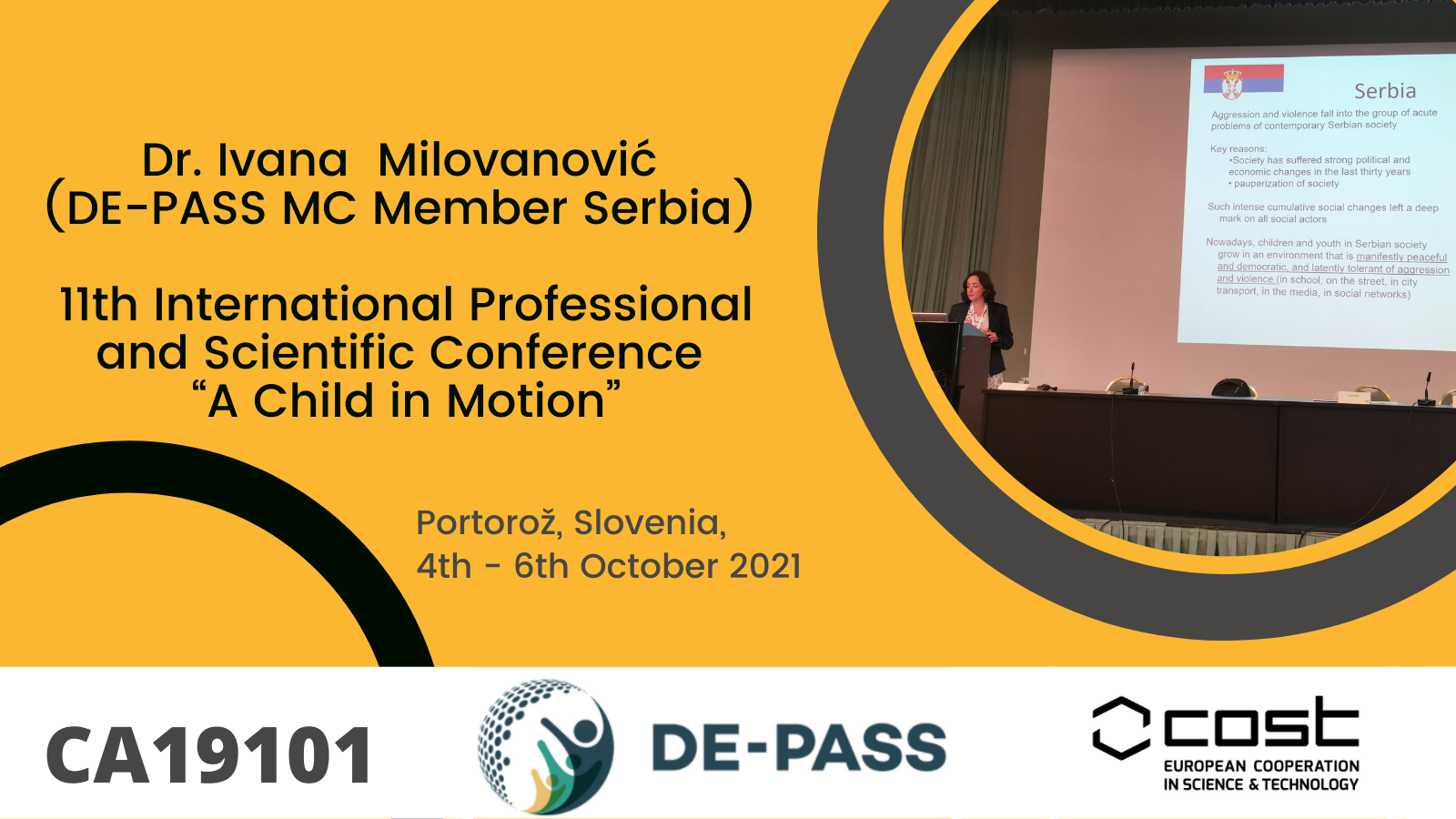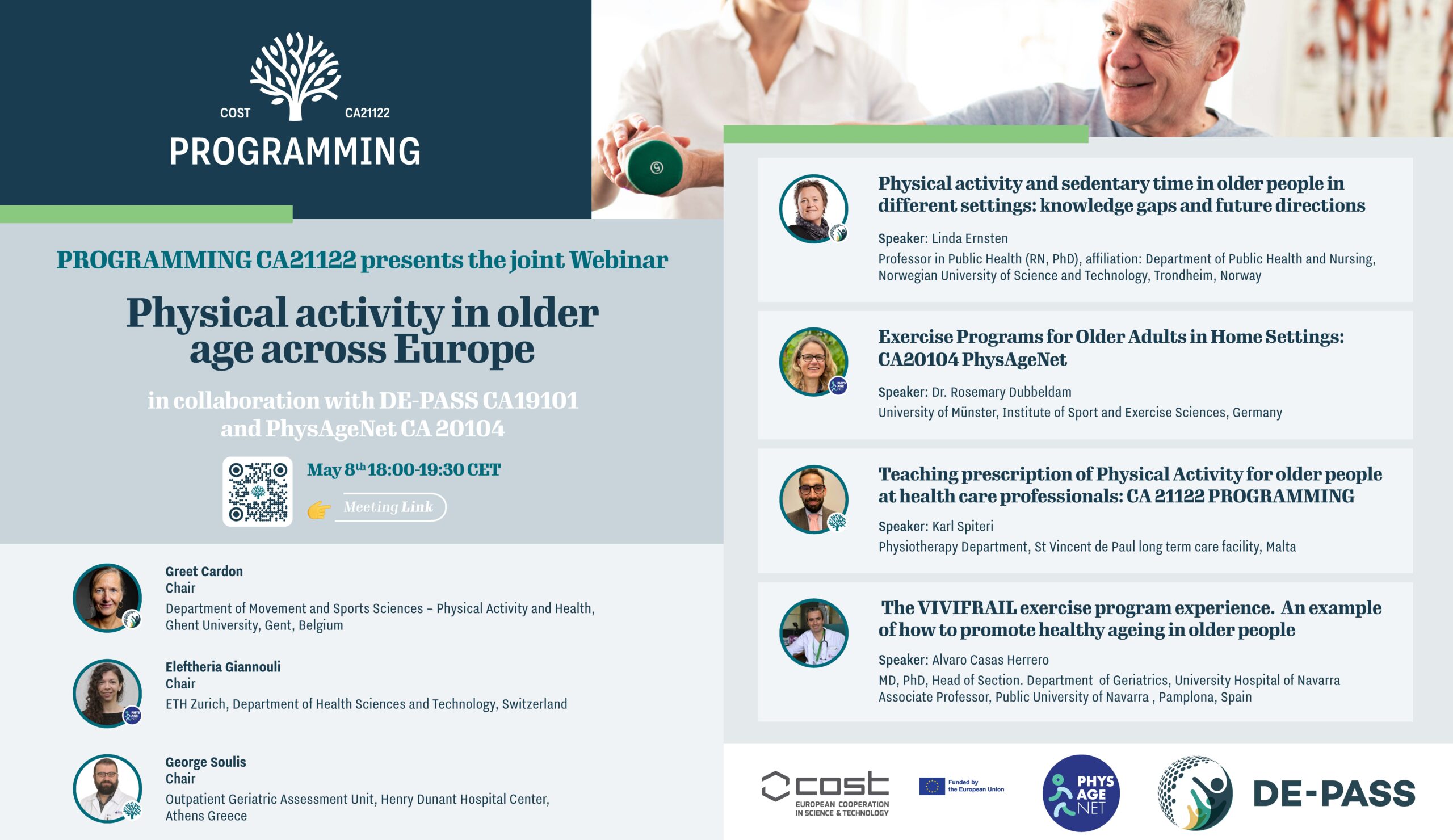Dr Ivana Milovanović, Associate Professor at the University of Novi Sad, Faculty of Sport and Physical Education, Serbia, recipient of an Inclusiveness Target Countries (ITC) Conference Grant
I am delighted to report that I was successful in my application for an ITC Conference Grant (advertised by the DE-PASS COST Action) and recently presented at the 11th International Professional and Scientific Conference “A Child in Motion”, held in Portorož, Slovenia, 4th – 6th October 2021. This Conference was organized by the Science and Research Centre Koper, Slovenia.
On the second conference day (05/10/2021), from 10.45 – 11.15, I presented my key note lecture under the title “Youth sport between Social exclusion and Inclusion – SAVE project in Serbian context”. I presented the concept of social exclusion, inclusion, vulnerability, aggression and peer violence as social phenomenon, in order to explain their presence in the field of youth sport, mainly in Serbian socio-economic context. The research findings, which are also results of the SAVE project implementation, point to dual nature of youth sports: on one hand, it is a popular extracurricular activity, and on the other hand, youth sport is to some extent a “mirror” of the society in which it takes place, as evidenced by examples of aggressive behavior. Youth sport by its nature has the capacity for social inclusion, but negative social circumstances encourage exclusionary and aggressive behavior (both from peers and from adults) towards youth. This makes it clearer why youth sport is in a constant “balance” between social exclusion and social inclusion.
This research has been done in line with the “DE-PASS” COST Action (CA19101). Therefore, I believe that the research findings presented during the lecture entitled ” Youth sport between Social exclusion and Inclusion – SAVE project in Serbian context” will contribute to identifying, understanding, and measuring the determinants which could promote, maintain, or inhibit Physical Activity Behaviours (PABs) among children and youth. Additionally, we should expect better implementation of multidisciplinary innovations and research findings in this area.
Finally, I met new colleagues with whom I exchanged views on above mentioned and other compatible research topics. Those new professional acquaintances could be an initial step for future cooperation in the COST project framework.


